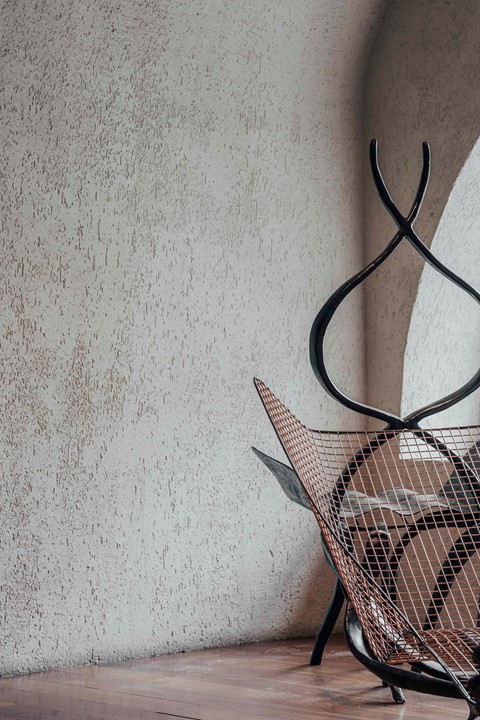Omotunwase Osinaike, curator of the Nigerian pavilion at this year’s London Design Biennale, talks about the natural migration of sand from the Sahara to the Amazon
Art historian, curator and writer Alayo Akinkugbe is behind the popular Instagram page A Black History of Art, which highlights overlooked Black artists, sitters, curators and thinkers, past and present. In a new column for AnOthermag.com titled Black Gazes, Akinkugbe examines a spectrum of Black perspectives from across artistic disciplines and throughout art history, asking: how do Black artists see and respond to the world around them?
The Sahara desert and the Amazon rainforest are two natural phenomena separated by 3,000 miles but connected by a quiet transatlantic relationship: the migration of sand. The Nigerian pavilion at this year’s London Design Biennale, Natural Synthesis, is based on this connection between two of the world’s most expansive terrains.

London-based Nigerian designer Omotunwase Osinaike graduated with an MA in furniture design from Central Saint Martins last year. His design for a lounge chair was a hit at the graduate showcase and a year later, he has now curated Natural Synthesis. In our Zoom call, he sits mid-journey in a car in Lagos; “three of the furniture pieces in Natural Synthesis are being made in Lagos, including the prototyping and all aspects of production,” he says, giving reason for being in his home city.
The concept for Natural Synthesis is based on the transatlantic journey of dust from the Sahara Desert – just north of Nigeria – to the Amazon rainforest. “There’s sand travelling from the Sahara and being deposited in the Amazon, which is one of the world’s most biodiverse locations,” Osinaike explains. “Interestingly, the amount of sand washed away by rainfall in the Amazon [around 20,000 tonnes] is almost the exact amount that’s replaced by sand which travels from the Sahara. I found this spellbinding and looked at it as a design opportunity; how can we create work that speaks to this natural exchange?”
The theme of this year’s London Design Biennale, The Global Game: Remapping Collaborations, encourages cultural exchange. “I’m [also] working with architects from Bolivia and Peru and we are doing this collaborative installation, part of which has been made in London,” says Osinaike. Working collaboratively with architects from the Amazonian region was important, so that “the design itself has the sensibilities and reference points” of that environment, as well as the Sahara.

Reflecting on the position of African designers in London’s design industry, Osinaike says, “I don’t think it’s hard to see that we are underrepresented … but, many young Black designers are taking prominent positions in the design industry.” He recognises a recent rise in the visibility of Black UK-based designers, saying, “African and Caribbean people are contributing excellent work to the design industry; the likes of Mac Collins, Samuel Ross, Bianca Saunders and Grace Wales Bonner”. With conviction, Osinaike hopes “we will continue to be here and we will continue to multiply. I think it’s inevitable and unstoppable.”
With Natural Synthesis Osinaike hopes to present Nigeria as a “complex, multifaceted place. We are a complex set of people with so many different belief systems, creeds and languages,” he says, hoping that this complexity will be recognised. “I want people to walk away with the desire to be stewards of themselves, their environments and the planet itself. I think that will be the best legacy this could have.”
The London Design Biennale is on show at Somerset House in London until June 25.
